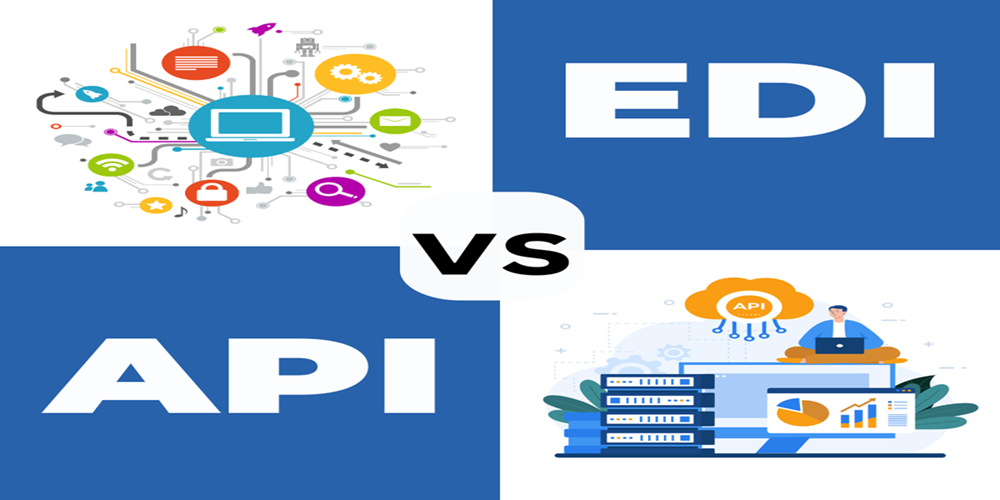Efficiency of your business also depends on choosing the right technology for exchanging your business data. While some companies rely on EDI (Electronic Data Interchange), others prefer APIs (Application Programming Interfaces). Most find it hard to decide between EDI vs API, wondering which one truly delivers the best results. However, what if the most powerful solution isn’t choosing the one over the other, but using both together? Let’s understand it in an easy way through this blog.
What Is EDI? Pros and Cons
EDI has been a trusted method for over five decades, especially in industries like retail, healthcare and logistics. It allows businesses to exchange documents such as invoices, purchase orders and shipment notifications in a structured and standardized electronic format. The pros of EDI are that by eliminating paper-based processes, it reduces errors, speeds up transactions and ensures compliance with industry regulations.
It streamlines data exchange between businesses, but isn’t flawless. Implementing EDI can be complex and requires good investment in setup and maintenance, making it difficult for small enterprises. Despite its drawbacks, it remains a go-to solution for companies that require security, reliability and the ability to handle high transaction volumes without human intervention.
What is API? Pros and Cons
APIs (Application Programming Interfaces) work in real-time, making them ideal for businesses that need instant data exchange. Unlike EDI, which follows rigid, standardized formats, APIs offer flexibility and seamless integration with modern applications. This is why APIs power many everyday experiences, such as tracking an Uber ride, receiving instant e-commerce updates, or connecting banking apps.
As APIs provide real-time communication between systems, businesses can make decisions faster, automate processes and improve customer experience. However, they require ongoing maintenance and security concerns must be carefully managed to prevent data breaches.
EDI vs API: A Head-to-Head Comparison
| Feature | EDI | API |
| Speed | Processes data in batches | Provides real-time updates |
| Security | Highly secure, standardized | Requires strong security measures |
| Flexibility | Less adaptable, rigid formats | Highly flexible and scalable |
| Integration | Complex setup process | Easier to integrate with modern apps |
| Cost | High initial investment | Lower setup costs, but ongoing maintenance |
EDI is a strong choice for industries that require structured, secure and bulk data exchange, while APIs excel in fast, flexible and modern integrations. So, what’s your best choice in EDI vs API?
How EDI and ERP Work Together
Many businesses integrate EDI with ERP (Enterprise Resource Planning) systems to manage internal data efficiently. The ERP system collects, processes and organizes the data before sending it to an EDI tool, which then securely transmits it to the trading partner. This ensures smooth, automated and structured data flow, reducing manual effort and errors.
Also, APIs can be used alongside ERP systems to provide real-time access to important business data. While EDI ensures security and compliance in large transactions, APIs allow quick decision-making by enabling instant access to business insights.
Why Not Use Both? The Power of EDI and API Integration
Instead of choosing between EDI and API, many businesses leverage both technologies together. This hybrid approach brings the best of both worlds, EDI’s reliability and API’s real-time capabilities, which allows businesses to optimize efficiency and performance.
Here are some examples of how businesses are using EDI and API together.
- Retail: EDI handles bulk supplier transactions, while APIs provide real-time inventory updates.
- Logistics: EDI processes shipping data, while APIs track deliveries and notify customers instantly.
- Healthcare: EDI securely transfers patient records, while APIs provide quick access to medical reports.
- ERP Integration: An ERP system gathers and processes data, then transmits it via an EDI tool to trading partners. APIs enable quick access and real-time updates, improving efficiency.
By integrating EDI with API, businesses can eliminate bottlenecks, reduce processing times and remain competitive in an increasingly digital world.
Which One Should You Choose?
Choosing the right technology between EDI vs API for business depends on your business type and requirements. If your business relies on structured, high-volume data exchanges such as in manufacturing, healthcare, or logistics, EDI is a strong option.
However, if your business needs real-time updates, agility and seamless connections with various applications, API might be the better fit. For businesses using ERP systems, integrating EDI ensures secure transactions, while APIs enable instant data retrieval and connectivity with modern applications. If you are looking for top-notch EDI solutions, contact EDI Partners today and make your data exchange process seamless.
- What is EDIFACT? A Beginner’s Guide to the Global EDI Standard - September 18, 2025
- Top Challenges of EDI Interface Integration and How to Overcome Them - September 18, 2025
- AI‑Driven EDI: How Artificial Intelligence Is Transforming EDI Consulting in 2025 - August 21, 2025

